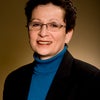As I watched the immigrant women in the movie Brooklyn, I thought back to my grandparents - all immigrants - who came to America, "the land of opportunity." As a second generation American, I am grateful for the opportunities with which I am blessed today. For this column, I decided to profile some women immigrants who contributed significantly to our country. Match the woman with her accomplishment:
____ 1. Received the Nobel Prize in Physics in 1963.
____ 2. The first African-American woman to publish a book.
____ 3. The first woman and the first Hispanic U.S. Surgeon General.
____ 4. A nuclear physicist who worked on the Manhattan Project, a secret effort to develop the atom bomb.
A. Phillis Wheatley
B. Maria Goeppert-Mayer
C. Chien-Shiung Wu
D. Antonia Novello
Not a willing immigrant, Phillis Wheatley was captured in Africa as a very young girl (seven or eight years old) and enslaved upon her arrival in the Massachusetts Bay Colony. Educated by her owners, the Wheatleys, Phillis wrote her first published poem when she was 12 years old. Her 1773 book of poems brought her into the limelight. With her book, Wheatley became the first African-American woman and the first slave to have a published book. After Wheatley wrote several poems in honor of George Washington, he invited her to visit him at his headquarters in Cambridge, Massachusetts; an invitation that she accepted. Her later life was difficult and marked by poor health.
Raised and educated in what was then part of Germany, physicist Maria Goeppert-Mayer immigrated to the U.S. after her marriage to U.S. chemist Joseph Mayer whom she met while he was working on his Ph.D. and boarding at her parents' home. Unable to be hired at U.S. universities due to nepotism rules (rules that prevented hiring two members of the same family - they hired Joseph but not Maria), she worked as a volunteer for many years. Goeppert-Mayer worked with Enrico Fermi in Chicago on his nuclear physics research. In 1960, she became a full professor at the University of California at San Diego. In 1963, she won the Nobel Prize in Physics for her work on the structure of nuclear shells. Goeppert-Mayer was the first American woman to receive that Nobel Prize and the second woman (after Marie Curie). Goeppert-Mayer has been inducted into the National Women's Hall of Fame.
Raised by a father who believed that girls should be educated, Chien-Shiung Wu immigrated to the U.S. to complete her education at the University of California at Berkeley. She joined the staff a Columbia University in 1944 and worked on the Manhattan Project, the effort that resulted in the atomic bomb. She is most famous for her experimental work that disproved the conservation of parity - that the right and left are not symmetrical in nature - work for which the two theoretical physicists who developed the theory won the Nobel Prize. Although snubbed for the Nobel, she received many other prizes for her work and was the first living scientist with an asteroid named after her. Wu has been inducted into the National Women's Hall of Fame.
The first female and the first Hispanic U.S. Surgeon General, Antonia Novello resolved to learn more about the kidneys after her favorite aunt died of kidney disease while Novello was in medical school. Originally from Puerto Rico, she decided to study medicine as a result of her many hospitalizations for a disease that was not corrected until she was in her early 20s. Novello became a nephrologist (a doctor who specializes in kidneys) after study at the University of Puerto Rico and the University of Michigan. She was appointed U.S. Surgeon General in 1990 after many years of service at the National Institutes of Health. Novello has been inducted into the National Women's Hall of Fame.
Learn about more she-roes and celebrate amazing women. These immigrant women are profiled in the book Her Story: A Timeline of the Women Who Changed America. We salute their tenancy in overcoming obstacles and acknowledge their accomplishments.
(Answers 1-B, 2-A, 3-D, 4-C )
